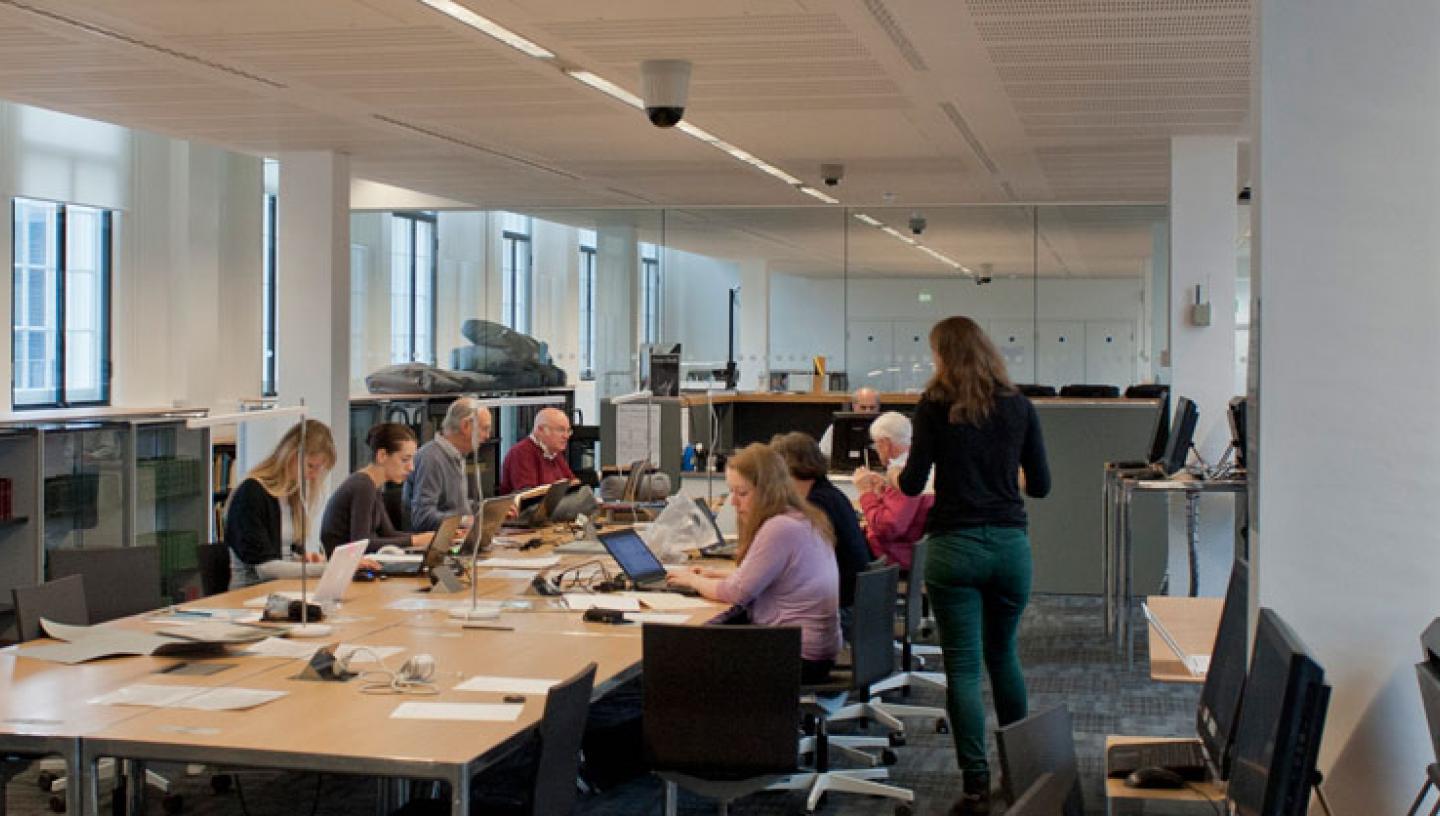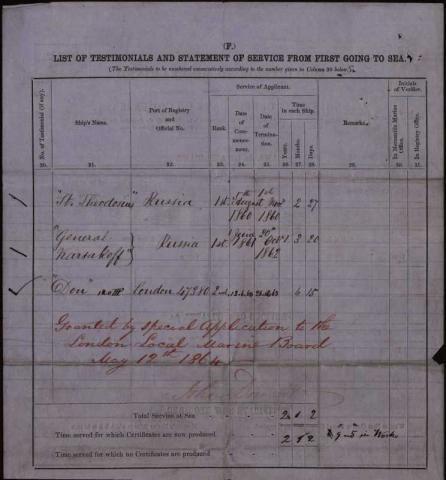
Essential Information
| Location |
National Maritime Museum
|
|---|---|
27 Jan 2013
Our item of the month is the Board of Trade certificates for James Pollock (1838–1910), founder of the shipbuilding and engineering...
I have selected the Board of Trade certificates for James Pollock (1838–1910), founder of the shipbuilding and engineering company James Pollock, Sons & Co Ltd.
Pollock came from a family of engineers and went into business as a consulting engineer and naval architect at London in 1875. The shipyard that later bore his name existed at Faversham in Kent throughout the period 1916–70 and specialized in the design and construction of barges, lighters, tugs, coasters and small tankers. It had an important role as an agency for Bolinder engines and was a pioneer in the building of concrete ships.
Compared with other Merchant Navy records at the National Maritime Museum, the engineers’ certificates tend to be overlooked and only viewed by experienced researchers. The collection consists of the surviving application forms and office copies of certificates issued to engineers in the period circa 1863–1938. The records are arranged numerically by certificate number and have never been indexed. This usually means that before the documents relating to a particular individual can be retrieved from storage, it is necessary to consult the relevant certificate registers held by The National Archives (TNA) at Kew. There is a consolidated index to the Registers of Certificates of Competency and Service for Engineers 1861–1921 numbered BT 141 at TNA.
Filed under certificate number 6051, we hold documents relating to Pollock’s qualification as Second Class Engineer, First Class Engineer and Extra First Class Engineer in the period 1860–67. The experience at sea that was a prerequisite for entry to these examinations was mostly gained through his employment on steam vessels recently completed by the shipyard of John & William Dudgeon at Cubitt Town in London. Pollock had earlier served his apprenticeship with the nearby engineering firm of J. & A. Blyth at Limehouse.
There is a colourful account of Pollock’s early career in the book The Pollocks as Engineers, written by his son Walter Pollock (1873–1947). The exploits took place in far-flung places including the Amur River in Siberia and blockaded ports along the coast of the Confederacy during the American Civil War. It is interesting to compare the events described in these paragraphs published in 1939 with the brief details of service Pollock provided on his application forms.

The later application forms record Pollock’s engagements on the Don, Louisa Ann Fanny, and Mary, all twin-screw steamers completed in 1863–65. The Dudgeon yard was busy constructing iron cargo vessels with low profiles, graceful lines and powerful engines. The intention was to make them suitable for the risky but highly profitable trade of blockade-running for the Confederacy, but not all of them were completed in time to fulfil this role. After crossing the Atlantic, Pollock was a crew member on several trips between the coast of Carolina and the offshore ports in the Bahamas and Bermuda. Engineering skills would have been essential for the reliable performance of machinery and the covert tactics employed against the Union forces maintaining the blockade.
The Don is noteworthy because she made at least ten successful runs through the blockade in 1863–64 and these adventures were celebrated in the book Never Caught, written by her master Augustus Charles Hobart-Hampden under the alias Captain Roberts. Pollock appears to have been employed on the Donbetween July and December 1863. A crew agreement for the Don (Official No 47380) from this year, including Pollock as 2nd engineer, can be found in the Board of Trade collection at TNA (reference BT 99/184).
The opportunities Pollock encountered in this period must have put him in a good financial position for his marriage and business venture as a marine engineer working from his own office in London. He was married to Emily Ethelinda Wiggins at Greenwich in 1868. During the career that followed, he designed and supervised the construction of several hundred vessels and secured clients in the city, along the River Thames and in shipping circles all over the world. In his last years, the family house at Purley in Surrey was named ‘Nassau’ and this probably harks back to his visits to the blockade-running port during the 1860s.
An uncatalogued collection of job files from James Pollock, Sons & Co Ltd is part of our business records section. Most of the surviving shipbuilding plans (catalogue prefix POL) are held by the Ship Plans Section at the National Maritime Museum. Copies of the books by Walter Pollock and Captain Roberts mentioned above exist in the Caird Library collection.
Graham, Archives Assistant